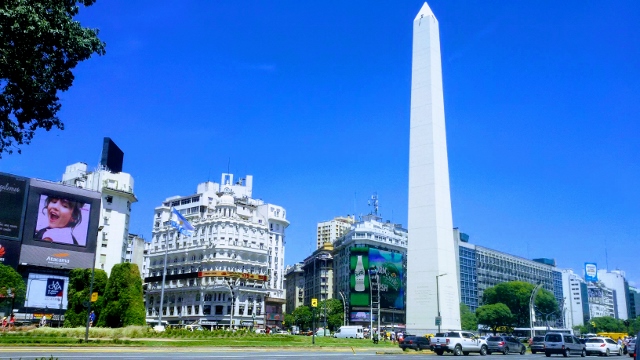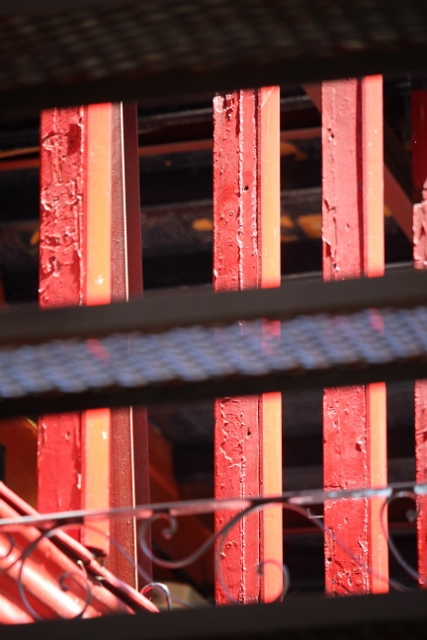I can’t get enough of Buenos Aires, Argentina’s scintillating capital city.
Three weeks from home, and we haven’t even left Buenos Aires yet! Buenos Aires is another one of those places that don’t really belong in this blog, it is not that we are discovering anything new here. Buenos Aires to us is a bit like London, or Amsterdam, a big city we like, and we have history with. One of us has lived a big part of her childhood here, the other has been coming back to this fascinating metropole for almost 30 years now, always insisting on at least 1 or 2 days sightseeing – even if that meant revisiting the same places over and over. We have seen the city in good times and in bad, we have seen it run down and dirty, with neighbourhoods of poor people in makeshift cardboard huts, in the crisis years back in the early 2000s, and we have seen it shining and prosperous, like a few years ago. And like now again. The city is clean, public transport works well; a modern metro network and hundreds of busses, which cruise along the wide avenues on dedicated bus lanes. The parks are green, well maintained; even the pavements are unusually even, with few holes. Never mind
that there is a crisis going on once again.
In fact, I don’t think I have ever come to Argentina in a time that, at least to some Portenos – as the inhabitants of Buenos Aires a known-, it was not a time of crisis. To be fair, with the peso having lost much of its value in the past year, imports are really expensive, and foreign holidays have to be postponed. Yet everybody will keep on taking taxis, will continue to go out for drinks, and for lunch and for dinner. New and even better ice-cream parlours have been popping up everywhere, and they are full (some suggestions: Rapa Nui – as a friend of us would say, “there is life before, and after discovering Rapa Nui” – and, newer still, Luciano’s; you’ll find both of them in various places in town). And crisis or no crisis, Portenos will take their holidays in January, to the beaches of Mar del Plata, or to Punta del Este in Uruguay. Which leaves the city eerily empty, abandoned, during the Argentinian summer months.
One of my favourite neighbourhood in Buenos Aires is Recoleta, north of the centre. Here is the most famous cemetery of the country, perhaps of the continent, the cemetery where the rich and famous have been buried for centuries. A little further north are a couple of fabulous museums, MALBA and the Museo National de Bellas Artes, as well of a more recent addition, the Floralis Generica, a huge shining metal sculpture in the form of a flower, built in 2002 in the centre of an enormous park. They know how to make parks, here!
Wandering a little further along Avenida Libertador, an eight or ten or even twelve lane avenue that races to the centre of the city and is flanked by tall, expensive apartment buildings, I came across the workplace of artist Carlos Regazonni along the side of the city’s railway station, Retiro. Or rather, I walk into the exhibition of some fabulous scrap metal sculptures outside, from crocodiles and cows to planes and petrosauruses.

the spot for tourist selfies, the letters BA in front of the obelisk in the centre of Avenida 9 de Julio
From Retiro one can climb up to the Plaza General San Martin, again through a lovely park. A few blocks further west one could cross Avenida de 9 Julio, another impressive traffic artery with no less than nine lanes each way, excluding the four bus lanes, to the Teatro Colon and the well-to-do apartment buildings and shopping streets around Avenidas Cordoba and Santa Fe. Or one could choose to walk south, along the pedestrian-only shopping street Florida, towards the Plaza de Mayo, the square in front of the presidential palace, Casa Rosada (the Pink House, as opposed to the White House somewhere else in the world). Opposite on the other side of the square, the Cabildo, the initial government building, from where the independence of Argentina was proclaimed, is indeed brightly white.
It would be too much to recall every place of interest in Buenos Aires, but let me at least mention San Telmo, especially nice on a Sunday, when the flea market operates on the square in the centre of the neighbourhood, Plaza Dorrego. Hundreds of stalls, many with typically Argentinian antiquities, like silver-decorated horse reigns and colourful old siphons, the bottles used for soda. And that other quintessentially Buenos Aires neighbourhood, La Boca, where according to the legend it all began, where the boats with immigrants arrived, where the tango was originated. Most of the neighbourhood is very poor, allegedly unsafe to walk around. Pretty run down, as opposed to the rest of the city. But at the very end is the touristy part, with many colourful houses. I remember them long ago, all corrugated iron, almost falling apart; now there is still the corrugated iron, but reinforced with a solid stone or concrete base. Balconies have puppets of Argentine characters, from Maradona to the pope, overlooking the crowds of tourists moving from shop to shop, yet, it is a unique place, a must-see in Buenos Aires. From which you can take a bus to Puerto Madero, the other part of the old port, nearer to the city centre and now transformed into a really nice area full of excellent restaurants and bars. And an ice-cream parlour or two.

the old warehouses in Puerto Maduro have been transformed into apartements and upmarket restaurants; the crane in decoration
And if you have seen it all? Every tourist sight in town? You haven’t. You can wander around this town, not only the centre, but into other areas, too, and just come across a wonderful old building, quite possibly almost collapsing, but its delicate stucco decorations or its metal-grill balcony crying out to be saved. And who knows, some of them will. Once the crisis is over, of course.
next: Rosario, Argentina’s third largest city











































Buenos Aires is really an interesting place!